UNESCO World Heritage Sites
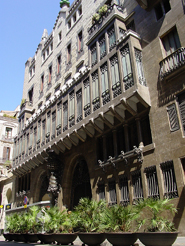
Barcelona has a whopping 9 UNESCO World Heritage Sites all offering "an exceptional and outstanding creative contribution to the development of architecture and building technology in the late 19th and early 20th centuries" according to UNESCO criterion (i), (ii) and (iv). It will come to no surpirise to you that 7 of the 9 sites have been designed by Antoni Gaudi - Barcelona's most famous architect.
In the centre of the city, in the Raval, specifically on Nou de la Rambla Street is one of Barcelona’s most visited attractions – Palau Güell. This was the only project which Gaudi actually completed and has not been altered or touched since. It is currently undergoing restauration work, and a complete visit is not possible, however, for FREE, it's a great distraction.
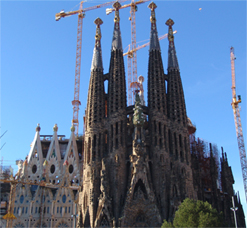
The Nativity facade and the Crucifixion facade of the Barcelona landmark, the Sagrada Familia Cathedral, are the next two on the list and this is no surprise at all, with the most visited attraction in Barcelona able to stun even the most sceptical of visitors. You cannot fail to be impressed by the magnificent unfinished masterpeice and marvel at the man's creative genius.
The central, tree-lined avenue of Paseig de Gracia boasts 2 of the World Heritage sites - La Pedrera or Casa Mila and Casa Batlló. La Pedrera means "Stone Quarry" due to the extensive use of sandstone on the facade bereft of straight lines, and is a marvel to behold. Casa Batlló too has a distinctive design, often compared to Monet's Lillies painting, and must have the best tiled rooftop in the city!
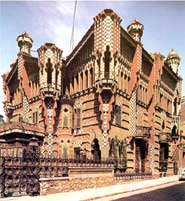
Casa Viçens is located in the nearby Gracia neighbourhood, and is a brick building also decorated with tiles typical of Gaudi. Built in 1878 and 1880, this building is sadly not open to the public and remians privately owned. In 2007 it was put up for sale for the cool price of 35 million Euros. However, it is very central still, and well worth strolling past as you explore the Gracia quarter. Fontana Metro station on line 3 (green line) is the quickest way to get here, or you can always walk directly up from Paseig de Gracia, after viewing other Gaudi buildings, too.
Park Güell located in the north of the city is another Gaudi 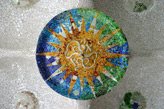 addition to the UNESCO list. The park is on a gradient and has an ornate and decorative entrance which was where the plans started for this urbanisation which never really materialised. Well worth a visit with fantastic views of the city.
addition to the UNESCO list. The park is on a gradient and has an ornate and decorative entrance which was where the plans started for this urbanisation which never really materialised. Well worth a visit with fantastic views of the city.
Colonia Güell is the final offering from Gaudi included in the list of 9, although this is slightly outside Barcelona city centre itself, in Santa Coloma de Cervell� around 20 minutes away. This combines a textile estate and peculiar oval shaped chapel, and was perhaps an experiment for forms and shapes for the Sagrada Familia.
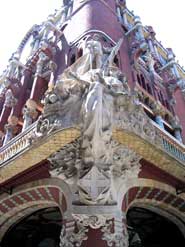
The only adittions to UNESCO's list not to have been designed by Gaudi, but well justified for their inclusion are the work of Catalan architect Luis Domenech i Montaner. The Palau de la Musica Catalana, or the Catalan Music Palace is a Modernista building was designed and built by Montaner between 1905 and 1908. Nowadays guided tours (with enormous amounts of knowledge) will show you the fantastic concert hall with stained glass cupola, amongst other attractions.
Just a short walk from Sagrada Familia, along "Avenida Gaudi" (Gaudi Avenue) is the Hospital de la Santa Creu i Sant Pau. This is a beautiful hospital and totally different to any other hospital wing you've ever visited I can assure you! The brick and tiled front is a strong theme through many of Gaudi's works, and also employed by Montaner to great effect.
Next | Top 10 Sights for Children
This page is valid: XHTML 1.0, CSS 2.0 | Secure payment form | Privacy | Contact |
